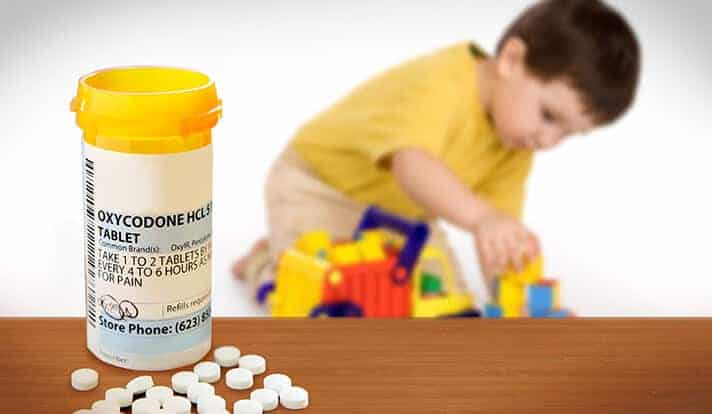Thousands of children are hospitalized annually for prescription opioid poisonings, and in recent years, hospitalization rates have nearly doubled among children of all ages, according to a new Yale study that shows toddlers and older teens are particularly at risk.
These findings, based on a review of hospital discharge records over a 16-year period, show the impact of the prescription opioid crisis on children and the need for strategies to address it, said the researchers.
The study was published Oct. 31 in JAMA Pediatrics.
Prescription opioids include common painkillers such as oxycodone, hydrocodone, and fentanyl. In adults, the growing use and abuse of these drugs are linked to a rise in hospitalizations for opioid poisonings. To gauge the impact of these trends on children, the Yale team conducted a comprehensive analysis of hospitalizations attributed to opioid poisonings in children and adolescents.
First author Julie Gaither and the Yale team analyzed data from the Kids’ Inpatient Database, a national source that compiles data on children admitted to U.S. hospitals. The researchers examined discharge records for patients aged 1 to 19 who were hospitalized for opioid poisonings. Using data from 1997 to 2012, they identified more than 13,000 such records.
The researchers found that hospitalizations for opioid poisonings in children rose significantly during the period studied, with the greatest increases seen in the youngest kids and the oldest teens. “Over 16 years, poisonings from prescription opioids in children and teens increased nearly twofold,” Gaither said. “Those most vulnerable to opioid exposure were children ages 1 to 4 and 15 to 19. In toddlers and preschoolers, rates more than doubled over time.”
Gaither noted that prescription opioid poisonings among children less than 10 years of age were primarily of an accidental nature, but among older teens, suicidal intent was the primary cause.
A silver lining in the data is that hospitalizations among older teens did decrease slightly in the most recent years. “For 15 to 19 year olds, we saw a slight decrease, 7%, in hospitalizations from 2009 to 2012,” said Gaither.
Despite this decrease, “the take-home message is that prescription opioid poisonings are likely to remain a growing problem among children unless greater attention is directed toward the pediatric community,” she noted.
The researchers described multiple strategies for addressing the risks of opioid exposure in children, including changes to the packaging and storage of prescription opioid medications. They also discussed parent education, clinical practice guidelines for prescribing opioid painkillers to children, and programs to prevent opioid misuse among adolescents.
Other Yale authors include Dr. John M. Leventhal, Dr. Sheryl A. Ryan, and Dr. Deepa R. Camenga.
The study was supported by grants from the National Institute on Drug Abuse.
If our reporting has informed or inspired you, please consider making a donation. Every contribution, no matter the size, empowers us to continue delivering accurate, engaging, and trustworthy science and medical news. Independent journalism requires time, effort, and resources—your support ensures we can keep uncovering the stories that matter most to you.
Join us in making knowledge accessible and impactful. Thank you for standing with us!


